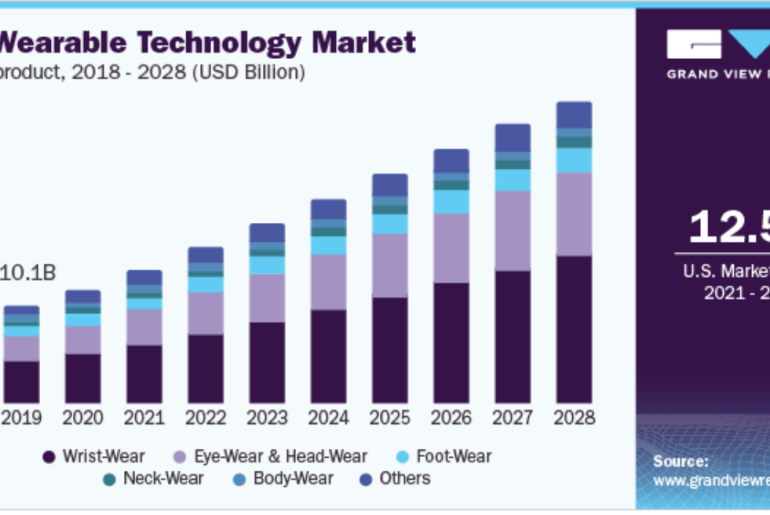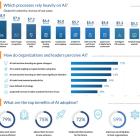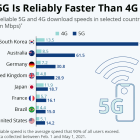As smartphones and digital devices become increasingly prevalent in our lives, so too does the demand for wearable electronics. Already, companies like Garmin are releasing new products that make use of the information collected from these devices for more practical purposes.
This growth is projected to continue as consumers get acclimated to the technology, and adoption continues to increase. With all signs pointing towards an ever-increasing need for wearable electronics, it seems likely that we will have plenty of future devices to look forward to.
eMarketer reports that in 2023 nearly a third of US adult smartphone users will own a smartwatch at least one time during the year (31%).
With the ever-growing popularity of wearables, eMarketer expects the US to see smartwatch adoption increase throughout the year. As consumers get more accustomed to wireless devices and their increasing use, this will contribute to increased demand for wearable electronics.
Merchants in the United States have already purchased 7 million wearables, and according to a forecast from IDC, “This figure is expected to rise significantly over the next few years.” As these devices become more popular and widespread, there will be more people with access to them. This will drive demand for all forms of wearable electronics, as well as cause prices to decrease due to increased competition in this market.
The growth of wearables is set to continue through 2022 and beyond. Google may have stopped selling Glass, but the search engine giant is expected to launch AR smart glasses which will most likely be more affordable than previous versions.
This continued use of wearable electronics shows that consumers are increasingly integrating these devices into their daily lives. In 2022 there are 1,105 million smartwatch users worldwide—that’s nearly 30% of all adult smartphone users worldwide. As technology improves and prices continue to decrease, we can expect these numbers to continue increasing even further.
Personal digital devices, such as smartphones and tablets, are now ubiquitous. They have also become essential basic tools for activities such as eCommerce, banking, gaming, and social networking. We’re also now beginning to see a rise in the use of wearables like smartwatches, which can now be used to make payments.
Wearable Electronics Devices on the Rise
The use of wearable electronics has already begun. But could the technology be used for more than just tracking fitness and health? According to a forecast from IDC, “Globally wearable shipments are expected to increase more than 12 fold.” This growth will include, “growth in smartwatches and related optical bands, followed by wrist-worn health trackers.”
“It is clear that consumers are ready for wearable technology, but also that they aren’t just interested in fitness bands,” commented Jean Philippe Bouchard, Research Director, IDC Health Insights & Predictions.
“There is a much larger opportunity in the enterprise, especially around health and wellness applications. Businesses are beginning to see the value in these technologies to help lower healthcare costs and increase productivity.”
The smartwatch market growth is expected to be driven by “increases in shipments of both Apple Watch models and new Android Wear devices that are coming to market from companies like Samsung.” IDC also predicts, “that overall shipment of smart bands will drop slightly. This is because these devices have become commoditized and their functionality has been surpassed by watch-style products.” Glasses are also becoming an increasingly popular wearable technology. And unlike other devices on the market, they have a more futuristic feel.
Many Current Wearable Electronics Device Makers Will Not Make it Through to 2023
eMarketer’s forecast for wearable electronics has slightly less certainty than IDC’s. The analyst firm predicts that shipments of smart wristbands will grow from 16.6 million in 2015 to 23.2 million in 2020, and that both smartwatches and glasses will each increase from 20.2 million shipments this year to 25.4 million over the next five years. While all of these figures are still significant, many larger wearable electronics makers will not be around by 2021.
This year 266.7 million people are expected to own at least one wearable device for at least one week, with the United States accounting for 31.2 percent of that figure. But why are wearables becoming so popular? eMarketer reports, “the use of wearables is helping to perpetuate a technology adoption cycle, which in turn is fueling demand and driving further growth.”
As traditional tech devices become more ubiquitous, consumers will want newer and more advanced versions. This increased demand will help drive increased sales of wearable electronics in the future.




